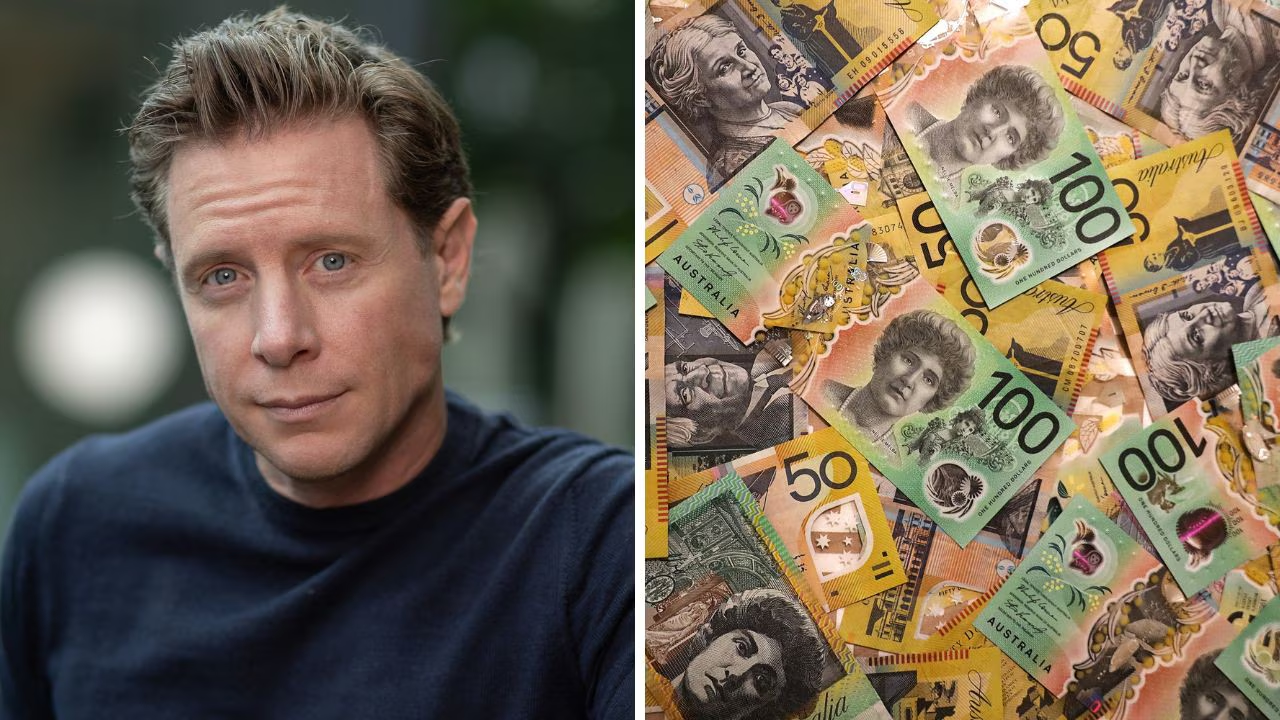Barefoot’s shock prediction for interest rates

Barefoot Investor Scott Pape is warning that the RBA could hike rates on Tuesday, after shock inflation numbers threw a dampener on expectations of further relief this year.
Annual headline inflation jumped to 3.2 per cent in the September quarter, according to figures from the Australian Bureau of Statistics released last week.
Experts had expected a rate cut on Tuesday in response to higher unemployment numbers, but now the big four banks are all predicting the RBA will hold the official cash rate steady at 3.6 per cent.
Commonwealth Bank is no longer forecasting any further rate cuts while the other three major banks don’t expect another cut until early to mid 2026. That would mean the RBA keeping rates steady at its December meeting as well.
Some commentators are even more hawkish.
MORE: Best fixed rates on market and their savings revealed
Mr Pape, author of perennial bestseller The Barefoot Investor, has told his followers to prepare for the worst.
“Newsflash: The price of everything is too damned high,” he said.
“And that means the experts that predicted a Melbourne Cup interest rate cut finished at the back of the pack (again): we won’t be getting a rate cut next week.
“In fact, if prices keep rising, the RBA’s next move could be to raise rates.”
He recommended Aussies increase their mortgage repayments so they were better prepared for tough economic conditions.
“The key with mortgage stress is simple: Panic early,” he said.
“Life throws enough curveballs. The families who win are the ones who see the financial threat coming and act before they have to.”
A word from the doves
A couple of experts have gone against the grain ahead of Tuesday’s meeting and are actually expecting a rate cut.
One of them is Jarden chief economist Micaela Fuchila, ranked as one of the most accurate cash rate forecasters last year.
Ms Fuchila said factors like the unemployment rate rising to 4.5 per cent in September would incentivise the cut.
“I think the market and consensus economists are putting too much weight on the RBA Guidance, just like back in July,” she told news.com.au.
“We don’t think the easing cycle is yet over. We expect a cut at this meeting given the slowdown in employment growth and expectations for inflation to ease in the next release, due to transitory factors boosting CPI in 3Q.”
Ms Fuchila said with unemployment gradually rising and consumption spending remaining weak, she struggled to “see a sustained increase in inflation that could trigger rate hikes”.
“In addition to this, the global backdrop remains uncertain, with the US government shutdown still going and little stimulus coming out of China.”
Professor Jeffrey Sheen from Macquarie Business School is also tipping a cut.
“A 25-basis-point rate cut is justified, as monetary policy should now move to a neutral stance rather than remain tight or expansionary,” Mr Sheen told news.com.au.
He said the September rise in inflation was largely due to the expiry of state electricity rebates.
“With inflation expectations remaining well anchored by the RBA’s target, these developments are not cause for concern.”
Why is the inflation figure a big deal?
The way the RBA deals with inflation has far-reaching effects on Aussies, including their mortgage rates.
When it sets the official cash rate (OCR) – the benchmark interest rate used by banks – it faces the tricky job of keeping inflation and unemployment stable; two competing priorities.
This year the OCR has seen multiple cuts, from 4.35 per cent in January, down to 3.6 per cent in August, where it remains. The average variable mortgage rate tends to sit about 2 percentage points above the cash rate.
Lower interest rates mean it’s cheaper to borrow, and more money is created in the form of loans.
It can give the economy a boost; consumers are more likely to spend, and companies are more likely to invest and hire workers.
More money in the system, however, means more dollars “chasing” goods, leading to an increase in prices – otherwise known as inflation.During high inflation, prices outpace wages and your savings lose value. To counter this, the RBA raises the cash rate, making borrowing more expensive and slowing the flow of money into the system.
That’s why Wednesday’s inflation data has got economists worried. The figure has suddenly shot above the RBA’s 2-3 per cent inflation target, and further rate cuts could make it worse.
To add to the central bank’s headache, unemployment also jumped to 4.5 per cent in September, hence why economists were so confident in a rate cut next week.
Those hopes have been dashed, and home buyers may have no further relief on the horizon – only higher costs.




